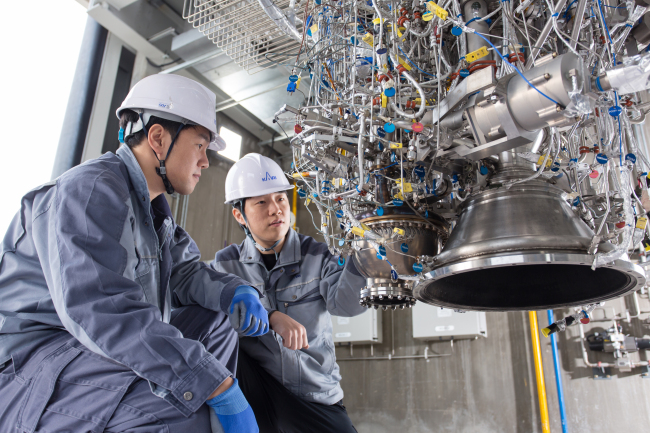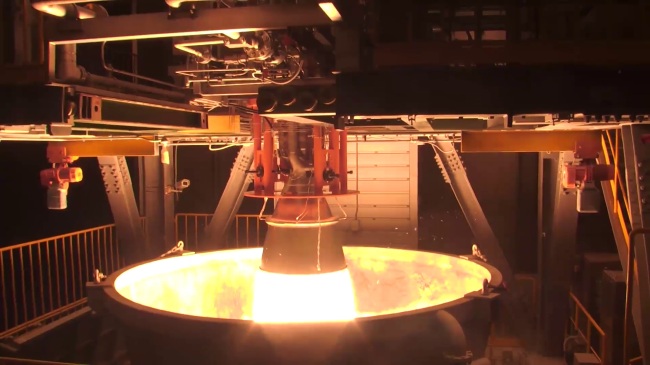GOHEUNG, South Jeolla Province ― Exactly three years ago on Sunday, Korea launched a rocket dubbed the Korea Space Launch Vehicle-I, or Naro, to put a satellite into orbit and become the 13th country to do so from its own soil.
Since then, the Korea Aerospace Research Institute, Korea’s own version of the U.S.’ NASA, which led the Naro project, has been trying to move on to the next phase ― the development of the Korea Space Launch Vehicle-II.
Since then, the Korea Aerospace Research Institute, Korea’s own version of the U.S.’ NASA, which led the Naro project, has been trying to move on to the next phase ― the development of the Korea Space Launch Vehicle-II.

The 33-meter, 140-ton Naro rocket was based partially on domestic technology. The liquid-propellant engine for the vehicle’s first stage was developed by Russia.
Although Korea, a relative novice in the aerospace sector, relied heavily on Russia through the entire process of the Naro, such as the design and construction of facilities, this time the nation plans to complete the next rocket project with its own technology from scratch.
Cho Gwang-rae, the president of KARI, pledged that it would spare no efforts to successfully build rocket engines for the KSLV-ll with domestic technology by December next year and to launch the three-stage, 300-ton rocket into space by 2020.
“We still face many technical difficulties to solve and the deadline for engine development scheduled in December next year is very challenging, but we have to set a clear goal and make a push for it,” KARI president Cho said in a press briefing last Thursday at the Naro Space Center in Goheung, South Jeolla Province, where the Naro rocket was launched in 2013.
Engineers from the agency also explained the progress of the project for the KSLV-II at the press meeting.
A 7-ton engine for the third stage of the KSLV-II and 75-ton engines for the first and second stages are currently in the pipeline.

After successfully conducting a 100-second test firing for the 7-ton liquid-fueled engine late last year, the agency aims to complete the final 500-second firing test with the same engine by the end of this year.
The agency will also start a firing test for the 75-ton engines in the latter half this year.
Although the average success rate of rocket launches worldwide stands at around 93 percent ― relatively low compared to those of other industries such as automobiles, whose failure rate would be significantly lower than 0.1 percent ― Korea’s technical capability is still not there yet.
“The largest obstacle for now is an issue related to incomplete combustion of a 75-ton engine, and a series of tests in the recent weeks have shown positive results,” said the president, adding the agency has been inching toward targets of the project for this year.
The Korean government which carried out space rocket development projects since 1990 will pour 1.96 trillion won ($1.62 billion) in the KSLV-II project by March in 2021.
Before the launch of the Naro, it had launched a total of four rockets ― 1.27-ton KSR-I in 1993, 2-ton KSR-II in 1998 and the 6-ton KSR-III in 2002.
By Kim Young-won (wone0102@heraldcorp.com)


















![[Today’s K-pop] Treasure to publish magazine for debut anniversary](http://res.heraldm.com/phpwas/restmb_idxmake.php?idx=642&simg=/content/image/2024/07/26/20240726050551_0.jpg&u=)